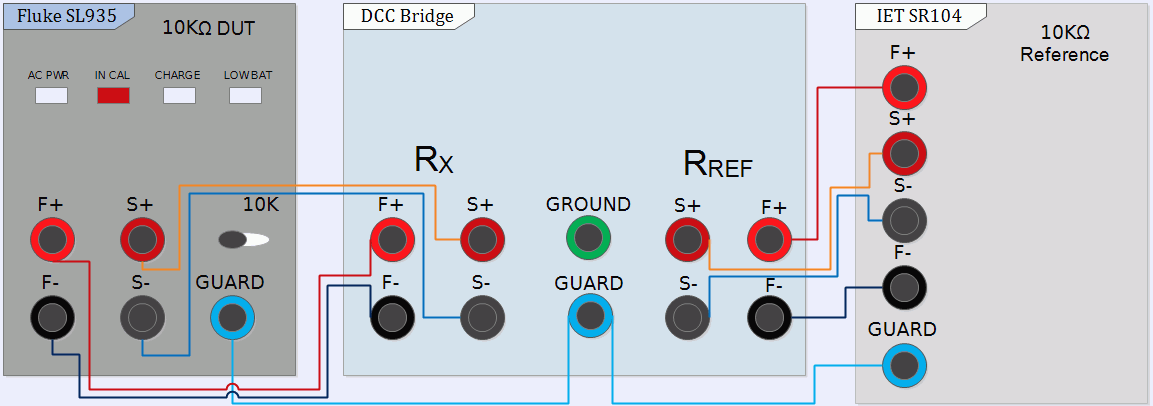Nothing stupid in questions, we all started somewhere

Block diagram of setup used is essentially same as this. Bridge is sourcing Ix current into connected resistor and then matching current Is multiplied by ratio sourced into second resistor. This is done using internal transformers and nanovolt detectors, and by keeping ratio very stable this setup essentially allow to calculate unknown resistance value from known calibrated resistance standard to <0.03ppm resolution. Also since currents are compared using switchable transformer windings, there is no resistance or voltage reference drift or temperature coefficients unlike in any DMM with resistance function.
This is typical setup for many top-level calibration labs and NMIs, outperformed only by CCC and QHR systems. Currents can be programmed to any value from <1mA to up to 250mA (or thousands amperes with high-power extenders for purposes of high-power shunt calibrations).

On block diagram you see Rx and Rref, on my earlier post Rs is considered Rref, same thing, different wording.
To cancel parasitic thermal EMFs (we talking single nanovolts importance to obtain such high resolution) bridge has reversal time that sets period of current polarity reversals. Smaller resistors work with 6-10 seconds reversal, while larger like 1k-10kOhm require bit longer times.
Hopefully this helps.